Are you not able to decide on the best way to protect the exterior of your newly built house?
You might have already considered applying a few coats of protective paint, but that won’t be enough to protect your walls from weathering in the long term. What you’ll need is exterior cladding that’s strong enough to last for the years to come and will provide all-around weather protection to the exterior walls.
At the same time, it can be made to match the exterior design of your house so that its visual appeal remains intact. That’s why you should consider getting high-quality house cladding installed for your home.
There are several factors to bear in mind while purchasing cladding material and executing the plan. Today, we curated this comprehensive guide to help you.
What Is House Cladding
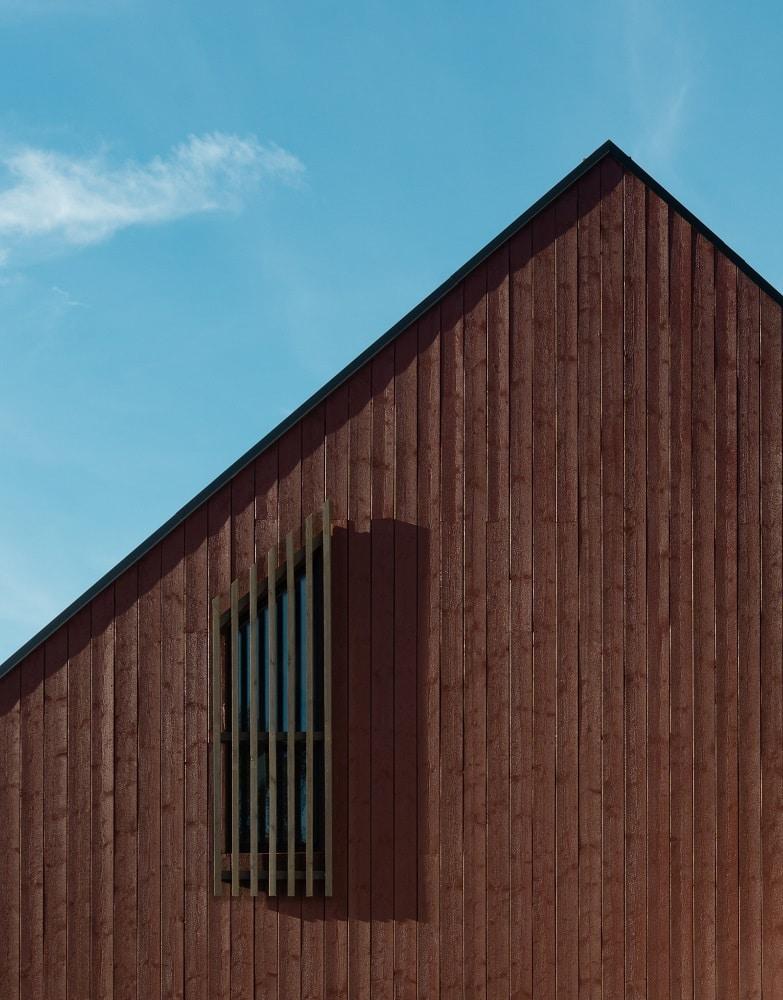
Understanding House Cladding
Cladding a house refers to putting up a facing material such as timber, stone, render, or brick on the exterior part of any house. It mainly serves to protect the internal structural walls from natural elements.
Though house cladding has a significant practical application, many homeowners are primarily concerned about its effect on the ultimate appearance of the house. Profiles, colors, material, and even the fixing procedures will play a significant role in this regard.
There are also certain forms of house cladding that are designed to include insulation or may be combined with external insulation when an existing home is retrofitted.
The Purpose of Exterior House Cladding
In earlier times, houses were built using solid walls, and locally available exterior cladding materials like brick or stone were applied for the process. As the 20th century set in, the industry witnessed a change in the standard practice, where cavities between the outer and inner walls were used for wall building. These were often referred to by the terms “skins” or “leaves.”
The load-bearing responsibilities were carried out by the internal leaf, while the outer leaf took care of the weatherproofing requirements. Note that the heat in such homes was retained by inserting insulation between the leaves.
Since the external wall didn’t have to rest on the ground anymore and could be hung off the internal skin instead, it could be designed using much thinner parts. The external wall is built primarily to prevent weathering of the internal wall.
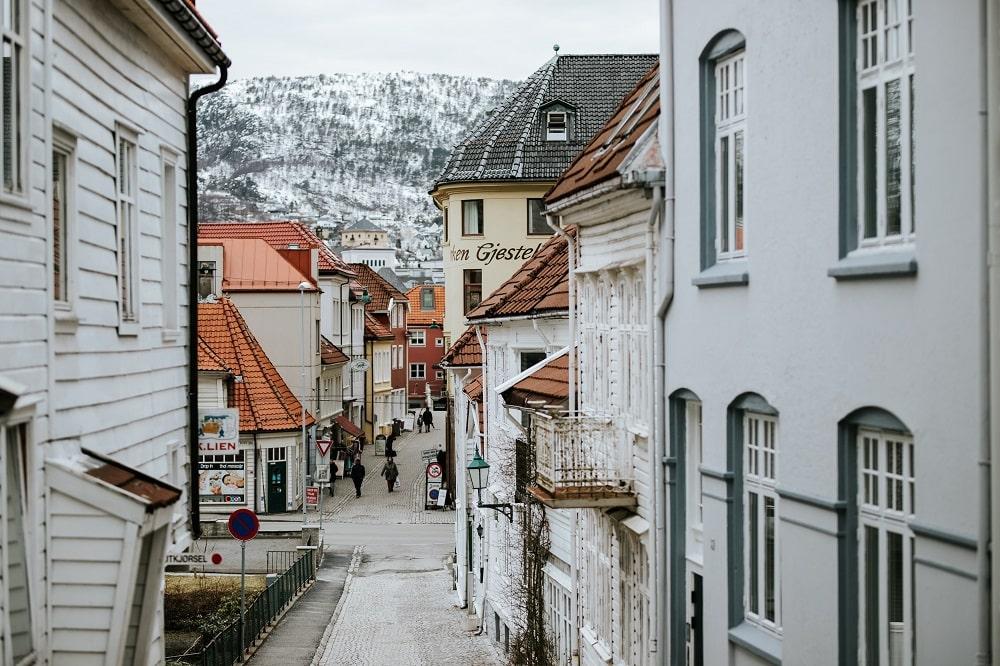
Planning Permission for Cladding
While conducting any renovative work such as house cladding, planning permission will almost certainly be discussed. The answer to this will depend upon whether the land falls among the protected areas such as within an AONB or National Park.
If you’re replacing material of similar value or quality on a property that already exists, the job will fall within the purview of Permitted Development in most cases. For those staying in semi-detached or terraced houses, how the cladding will impact the neighbors is a matter of concern, while planning permission may not be significant.
Choosing the Right Cladding Material
The selection of house cladding material is a multifaceted decision involving aesthetics, regulatory compliance, longevity, installation techniques, and financial implications. Moreover, the acoustic properties of the material can significantly contribute to the interior comfort of the home.
Aesthetically, the cladding should complement the architectural style of the house. Moreover, local planning bodies often stipulate that cladding materials should blend with the surrounding environment, particularly for self-build projects.
Consideration of the material’s longevity encompasses both its inherent durability and maintenance needs. Installation methods can vary and depend on the chosen material, affecting both cost and longevity. Additionally, the fiscal implications involve both the upfront cost of the material and ongoing maintenance costs.
The acoustic properties of cladding materials often remain underexplored but are vital in noise-prone areas. For instance, materials with higher density and elasticity, such as brick slips or stone cladding, can significantly reduce noise transmission due to their inherent sound-absorbing properties. Furthermore, the installation method can also influence the material’s soundproofing capabilities, considering the soundproofing properties of the material should always be taken into account, especially in urban environments, for a quieter, healthier home learn how to soundproof your room.
As far as the materials for house cladding are concerned, there is a wide range of options, including:
- Stone
- Timber
- Render
- Brick
- Flint
- Vertical tiling
- Porcelain tile
- Metal
- Fiber cement
- Modern synthetic varieties
- uPVC
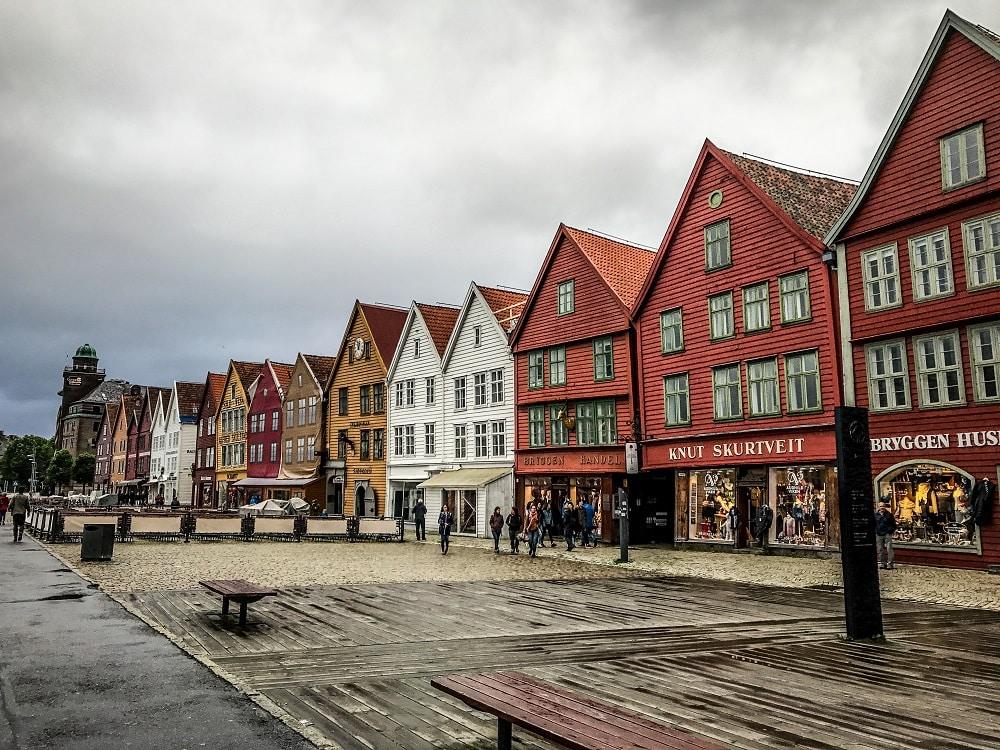
Types of Cladding Materials
Now that you’ve learned about house cladding and other important considerations, it’s time to have a closer look at each of the materials commonly utilized for the purpose:
1. Wooden House Cladding
Timber is among the most widely used materials for a range of furnishing and renovation projects, thanks to its extreme versatility. House cladding is no exception, as many homeowners trust this option more than other types when it comes to providing long-lasting protection to the internal walls.
Note that wood or timber cladding is available in various options that range from heat or chemically-treated timbers to softwood.
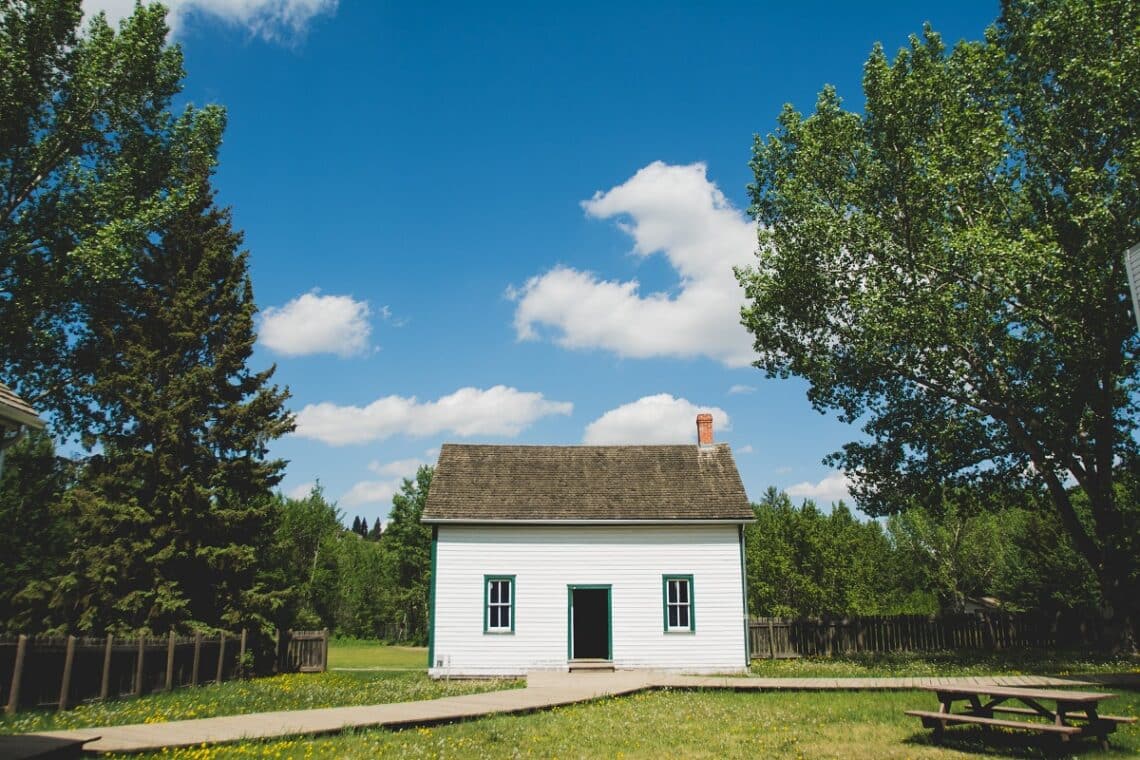
If budget is a constraint for you, softwood cladding will be an efficient option to go for. Some of the more cost-effective softwood options are pine and spruce. A point worth noting here is that softwoods like these will require painting and priming, along with consistent maintenance, including repainting and preservative treatments.
This variety might turn out to be costlier than a few hardwood varieties. However, this won’t be a concern if you’re ready to switch to other options quickly.
In recent times, there has been an increase in the use of timber in unstained form. These include larch, spruce, chestnut, and oak. A major advantage of going for these varieties is that they can deliver decades of service without the need for a surface coating. Weathering also provides them with a more attractive appearance over time.
Wooden boards are supplied in different ways, but you can put up wood cladding by yourself if you intend to save money. Notably, heat-treated options like Kebony, Accoya, and Thermowood are efficient choices as well. That’s because such treatments decrease their moisture level, thereby making them more stable compared to untreated timber. The average cost of wood cladding ranges from $1 to $5 per square foot.
2. uPVC Cladding
Another highly cost-effective option in comparison with other materials is uPVC cladding. There are a few premium-quality options that might cost almost the same as timber.
This external cladding material is basically made using cellular PVC with the help of a manufacturing process that leads to the formation of two layers. It’s available in timber-like, colored, and white variants and contains titanium dioxide on the external part that offers great UV resistance. This implies that good-quality uPVC variants are long-lasting and require minimal maintenance.
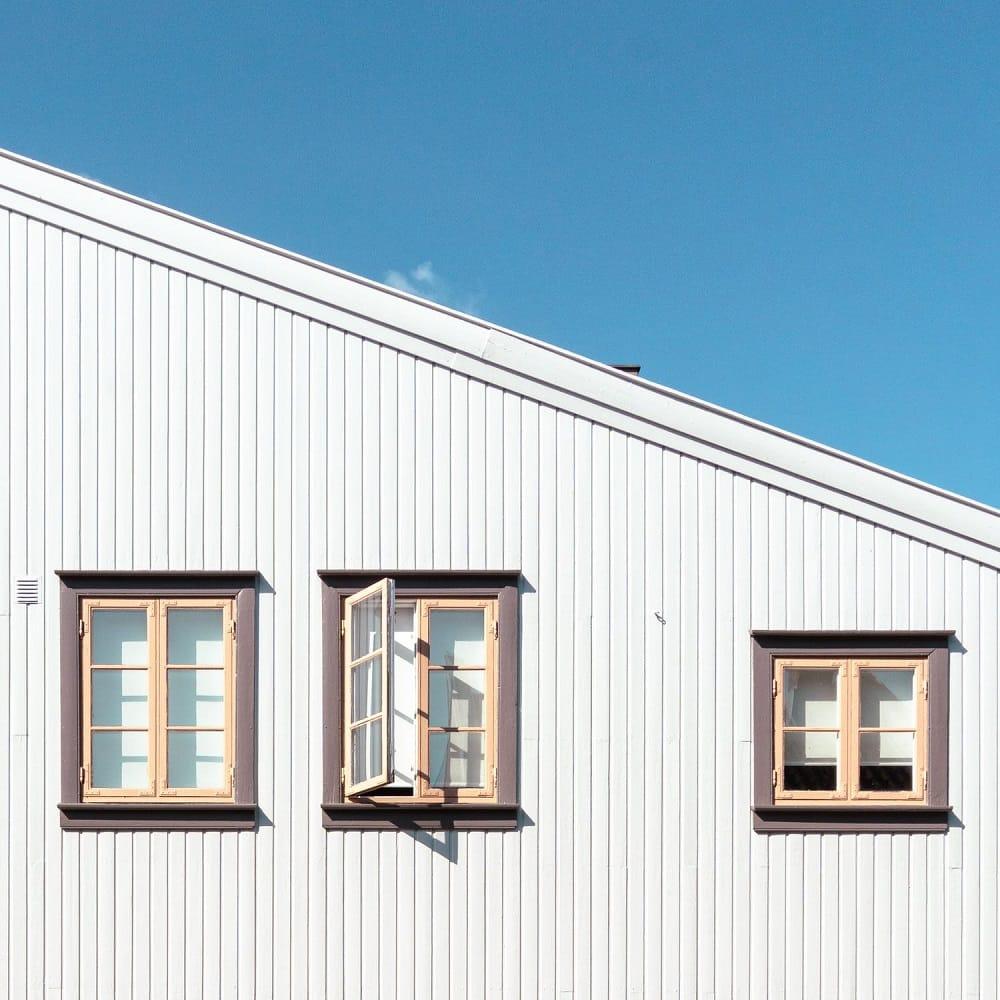
This cladding material is also simple to fix using DIY methods, as it’s lightweight and sold as convenient interlocking boards.
Note that the detailing on such material isn’t as delicate as that of wood. While it requires lower maintenance than timber equivalents, it can discolor over time unless you spend slightly more on versions of higher quality. Some of those variants may come with discoloration guarantees of up to 20 years. Speaking of the costs involved, it ranges from $6.50 to $10.50 per square foot.
3. House Rendering Cladding
Rendering is commonly used in many contemporary homes for its diverse benefits and uses. These come in different types ranging from lime renders that provide greater breathability to old properties to crisp and contemporary monocouche renders.
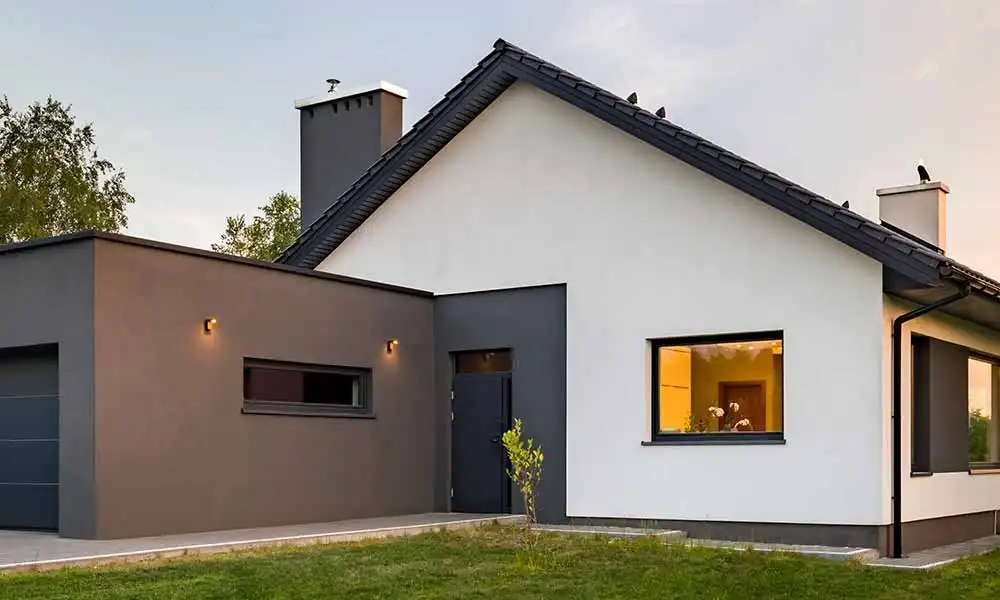
The latter type utilizes white cement and comes pre-colored so that you get a weatherproofing layer with a decorative finish. You can also apply these in a single coat that’s around 15 mm thick. While they might be more expensive initially, they are not as labor-intensive as traditional renders. On average, a wall rendering can cost between $50 and $60 per square foot.
Another point to note is that monocouche render is supplied in bags and is ready to be mixed with water. It’s then applied using either hand trowels or sprayed onto the surface.
In case you’re willing to spend a bit more, a through-colored render is a non-paint and convenient option. It also requires lower long-term maintenance, so you probably wouldn’t have to repaint them for five to 10 years.
4. Hanging Vertical Tiles Cladding
If you’re a fan of traditional finishes, vertical tiles are worth considering. However, keep in mind that they don’t come at very cheap rates, with tiles made of handmade clay being costlier than the concrete-based cladding.
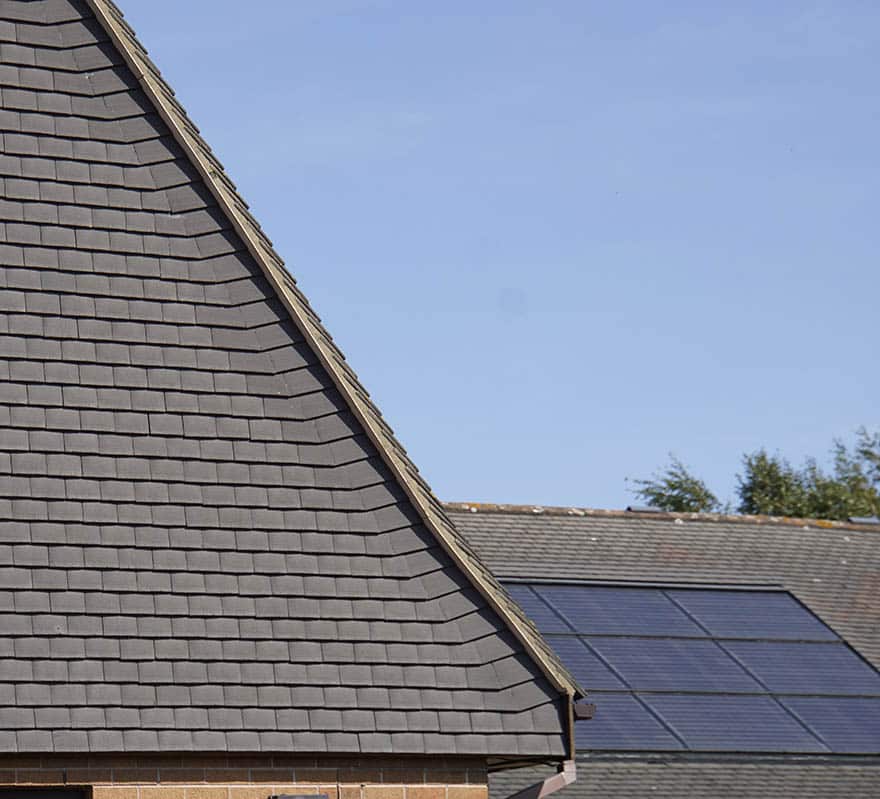
Installing such tiles can add considerable character to any building. You will also get contemporary options for hanging tiles, such as large-format porcelain tiles. This type also comes in several finishes and colors, making it quite adaptable for creative applications.
You can also customize them to create different patterns or a single pattern across the building. Speaking of the functional benefits of this type, it possesses superior insulating properties, which makes it ideal for cold climates. Note that the labor costs for tiling an exterior wall range from $4 to $32 per square foot.
5. Charred Timber Cladding
Next up is another traditional cladding option created using a Japanese technique, whereby wood is burnt slightly and then cured using natural oils. Also called Shou Sugi Ban cladding, charred timber sliding has been adopted for centuries in Japan.
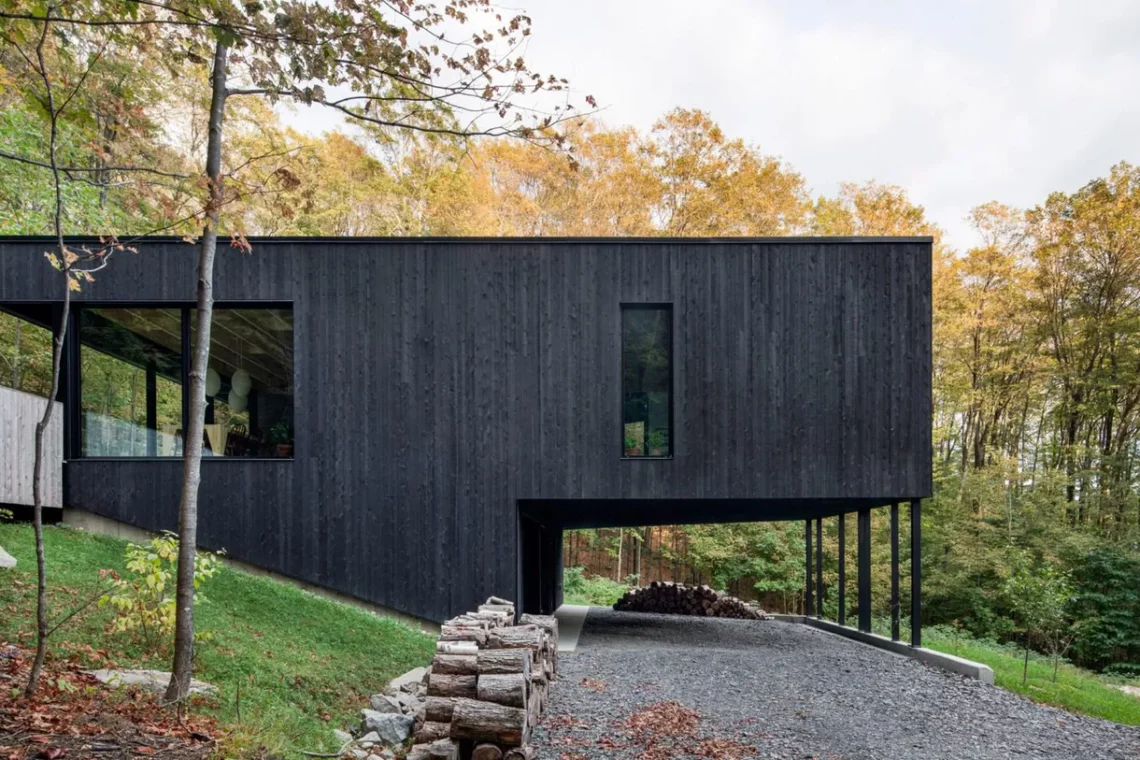
Note that the heat treatment followed by the curing process gives the timber a black, attractive finish that creates ample visual interest. This type is also extremely resistant to bugs and weather, so it won’t require the use of any pesticides or chemical preservatives. Charred timber cladding costs between $5 and $6 per square foot.
6. Fiber Cement Cladding
Created by combining sand, fiber, and cement, this cladding alternative can be modified to look like clapboard, shingles, and batten and board. Interestingly, it’s often called “Hardiplank” or “Hardie board”, after the notable manufacturer of cement siding, James Hardie.
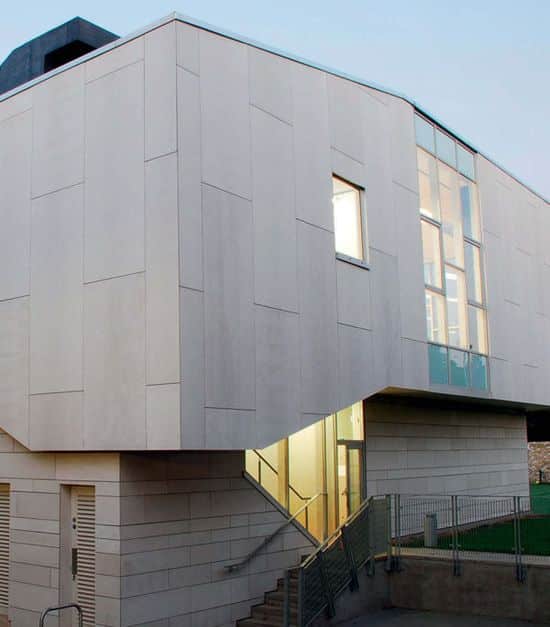
Fiber cement cladding is made to be waterproof and prevent damage due to heavy winds, hail, salt air, insects, and rot. Unlike many other cladding options, it isn’t flammable.
Notably, such material can come with warranties of as long as 50 years, and their life span is often assumed to be even longer. Fiber cement cladding has a remarkably realistic appearance since you can make it appear like brick, natural stone, or real wood. In case you select any solid color, it’s easily possible to paint such cladding.
But a downside of this option is that it isn’t recyclable even though it’s environmentally neutral. Apart from that, you’ll have to wash the sliding at a gap of two years and paint it every 10 years. Fiber cement cladding is priced at $2 to $8 per square foot, on average.
7. Metal Cladding
This type of exterior cladding has gained much popularity owing to its longevity and low maintenance requirements. Once installed the right way, it can last for decades as it won’t be damaged by snow or rain, and neither acts as a fungal growth medium.
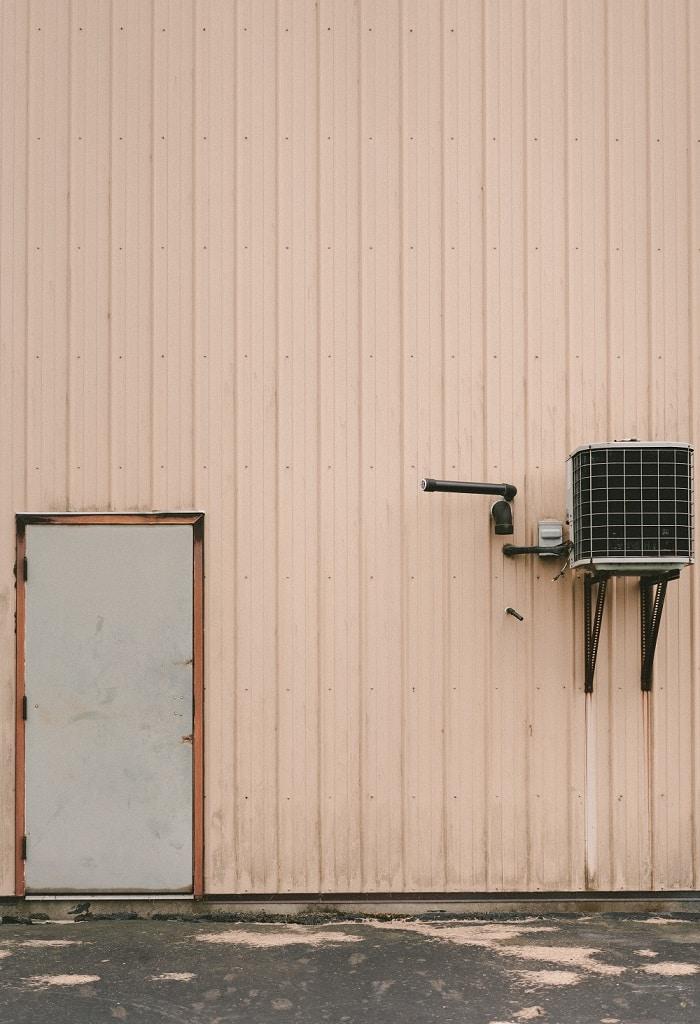
Its insect-proof characteristic is another advantage, which implies you won’t need to spend extra on spraying the cladding as with a wooden alternative. The metal cladding is also fireproof and would help guard the home in case a fire strikes your home.
Notably, the types of metal cladding you can apply to your home include aluminum, galvanized steel, copper, and zinc. Each of these metals, in turn, comes in different finishes and architectural styles.
Metal cladding isn’t a very environment-friendly practice as it requires mining, but the material is recyclable, with several companies offering recycled sliding panels and steel roofing alternatives. Another point to remember is that metal cladding is prone to denting.
While steel is more resistant compared to aluminum cladding, it’s costlier and might develop dents on exposure to major hailstorms. In such cases, the replacement will also be quite expensive. Metal sliding options can cost between $2 to $9 per square foot, depending on the style you opt for, the metal type, the finishing use, and the insulation added to it.
8. Stone Cladding
For those homeowners who prefer a classic, warm appearance, stone cladding is the perfect alternative. At the same time, the use of some particular varieties of stone can help create a contemporary look.
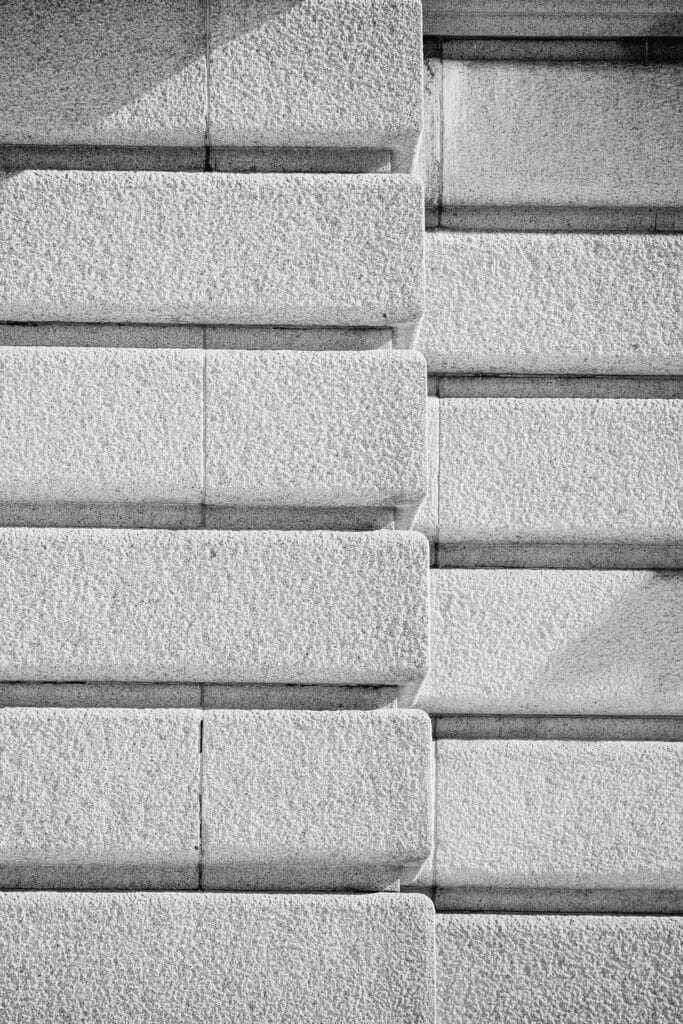
You’ll be glad to know that this type of home cladding is much cheaper than utilizing solid stone for constructing a house. In fact, some varieties come at similar rates as render cladding.
The types suited for cladding include slate, limestone, and sandstone. Local planners often dictate the stone type to utilize for your home based on the stones locally available in that area. Note that stone cladding can cost between $10 and $14 per square foot on average, with the price directly related to the chosen stone type and its availability.
9. Glass Cladding
These cladding panels can impart a modern look to any property while providing natural light in plenty. Remember that they’re a pricey alternative per square foot, though they require less maintenance. You’ll have to clean them once annually to ensure they remain intact in the long term.
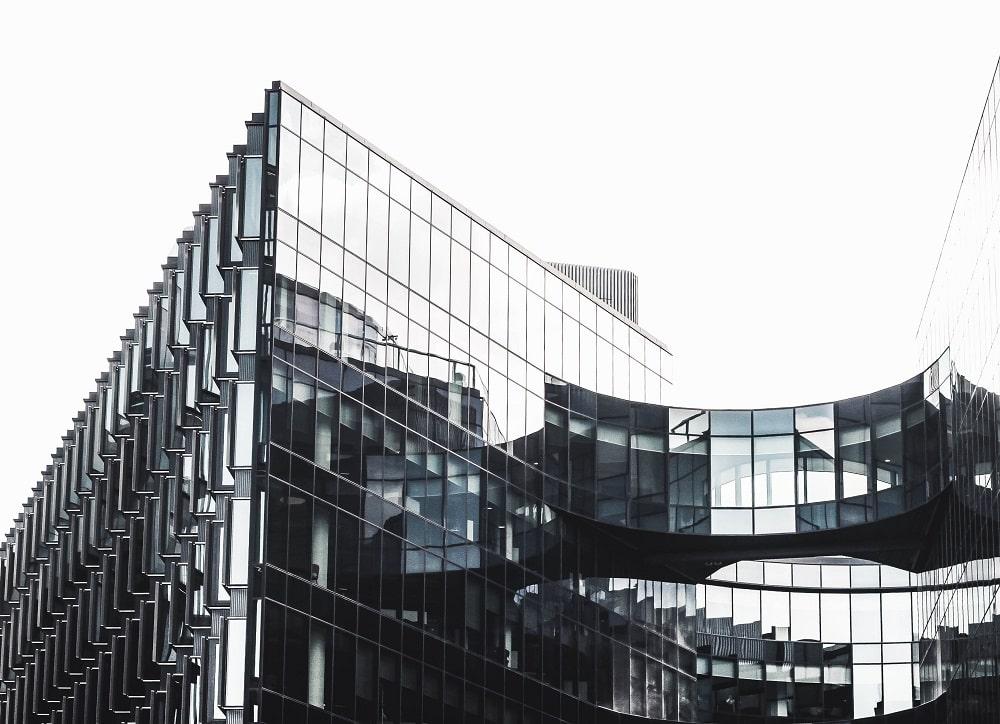
Cladding made of glass is a popular choice among architects striving to make a design statement on any building. Several world-class multi-storeyed buildings have utilized this type of cladding. It also offers great weather resistance and doesn’t change shape or warp with time.
Note that there are several lightweight options for such glass panels, so they can be installed pretty easily on any support batten. This also makes it simpler to achieve custom shapes. Speaking of the expenses involved, exterior panels of glass can cost anywhere between $15 and $60 per square foot.
10. Brick Slips Cladding
Though brick was traditionally laid as a ground-bearing, self-supporting wall, the use of brick slips or skins has gained popularity over the past few years. These slips are hung off a base that’s fixed to an inner wall.
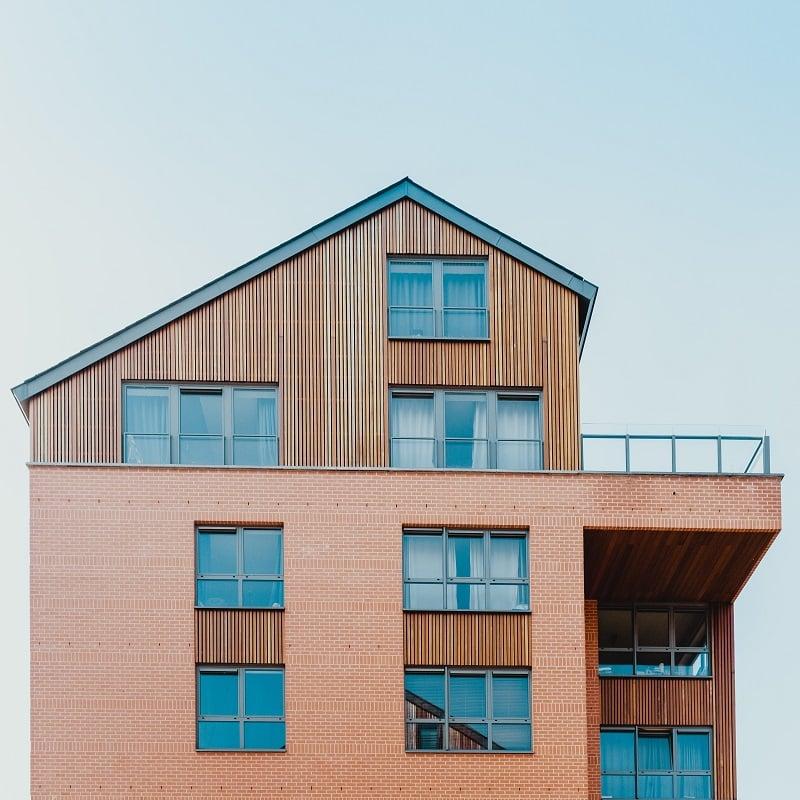
Their thin structure makes them a great choice for installing external insulation in any home. While they can be laid pretty quickly, remember that they are among the costlier options for house cladding.
Another concern is that they are not as eco-friendly as several other cladding materials. This is due to the enormous energy required to make bricks and the greater carbon footprint of the brick and cement industry.
11. Stucco Cladding
This term refers to a cement plaster generally made using Portland cement, water, and sand. However, the traditional technique applied lime along with water and sand. Note that horsehair or some other fibers are also applied sometimes.
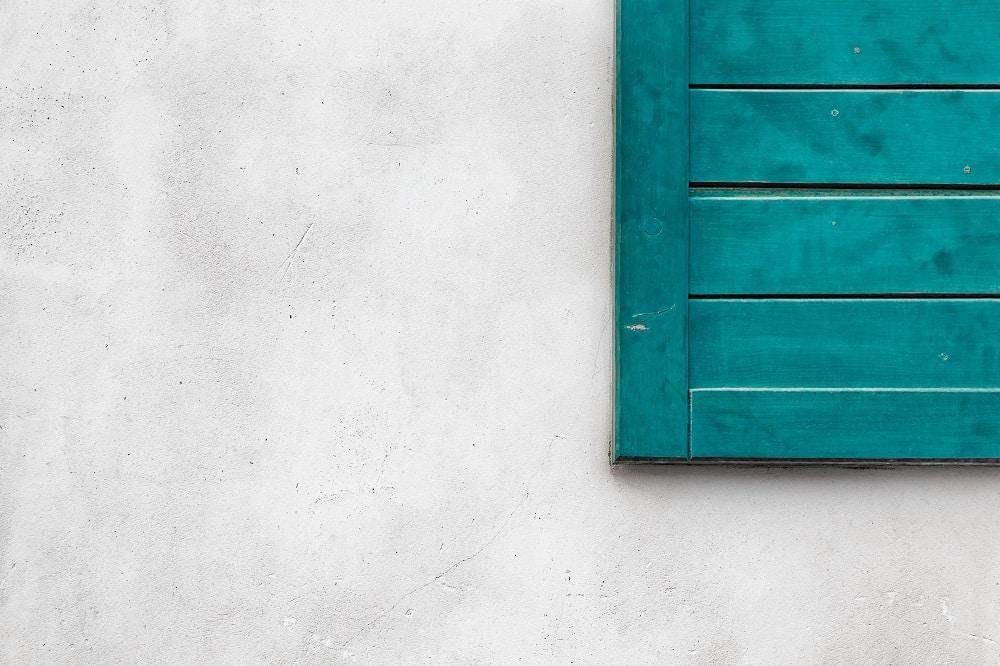
A particular variety of stucco known as synthetic or acrylic stucco is used to lend a crack-proof finish to cement plasters. It may be applied directly to the metal lath over wood-framed walls and concrete or masonry walls. Plus, you can color stucco by mixing some pigments with the cement plaster blend.
Its excellent insulating capability is what puts this wall cladding material ahead of many others. It can also seal the interiors tightly to decrease sound and also function as a great fire retardant.
However, the higher installation costs are a downside, as it needs to be put up in multiple layers. It also isn’t suitable enough for areas experiencing heavy rains or with perpetually wet climates. Stucco is available in bags, with each bag costing between $6 and $9 and covering approximately 25 square feet.
House Cladding Final Thoughts
Ready to clad your house with the best-fitting material to lock its walls from long-term weather damage? Don’t delay getting in touch with a suitable contractor to discuss all essentials, including the materials needed and the costs involved. We’re sure you won’t regret going for cladding made of any of the above materials.
In case you have to go ahead with a limited budget, you might choose to install the cladding on the areas where it’s most essential, such as the upper story. Alternatively, you can add feature panels to make the exterior look smarter while keeping the cost within your budget.
Related Articles
Types of Rolled Roofing for Easy & Cost-Effective Roofing
23 Types Of Pavers [Alternative Paver Types]


